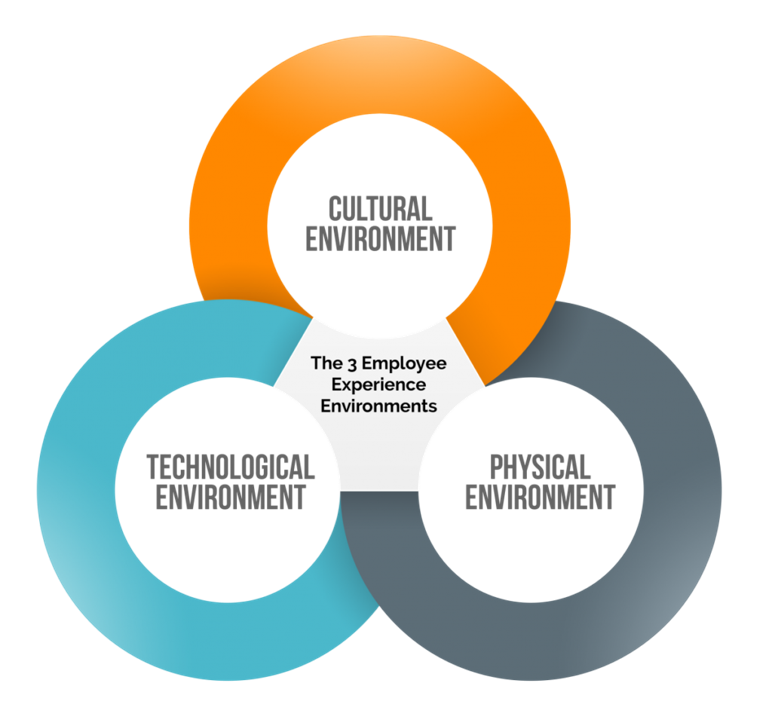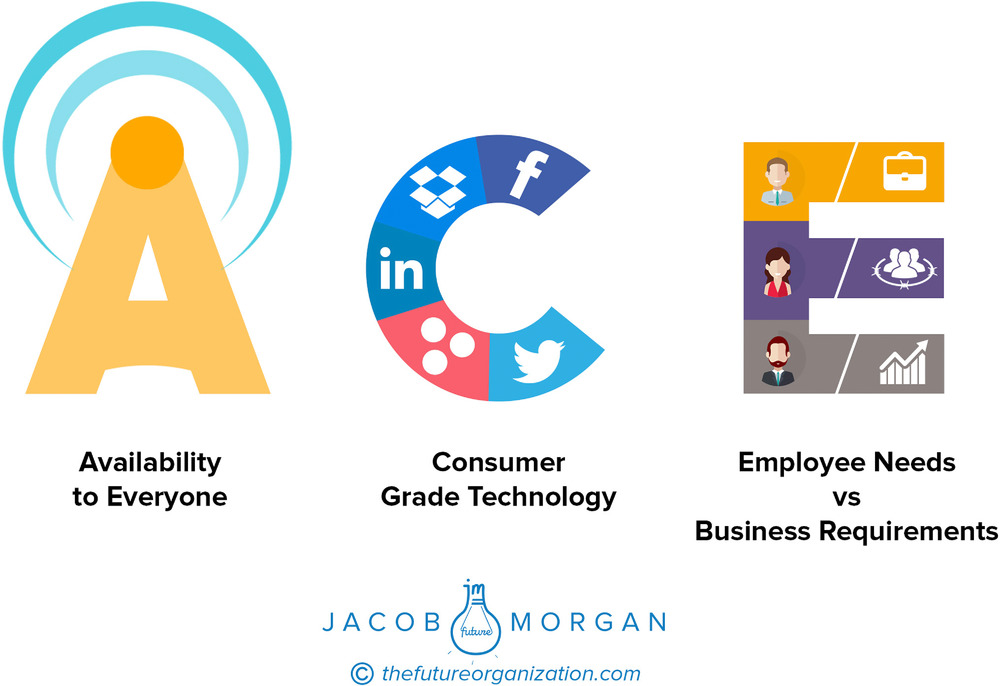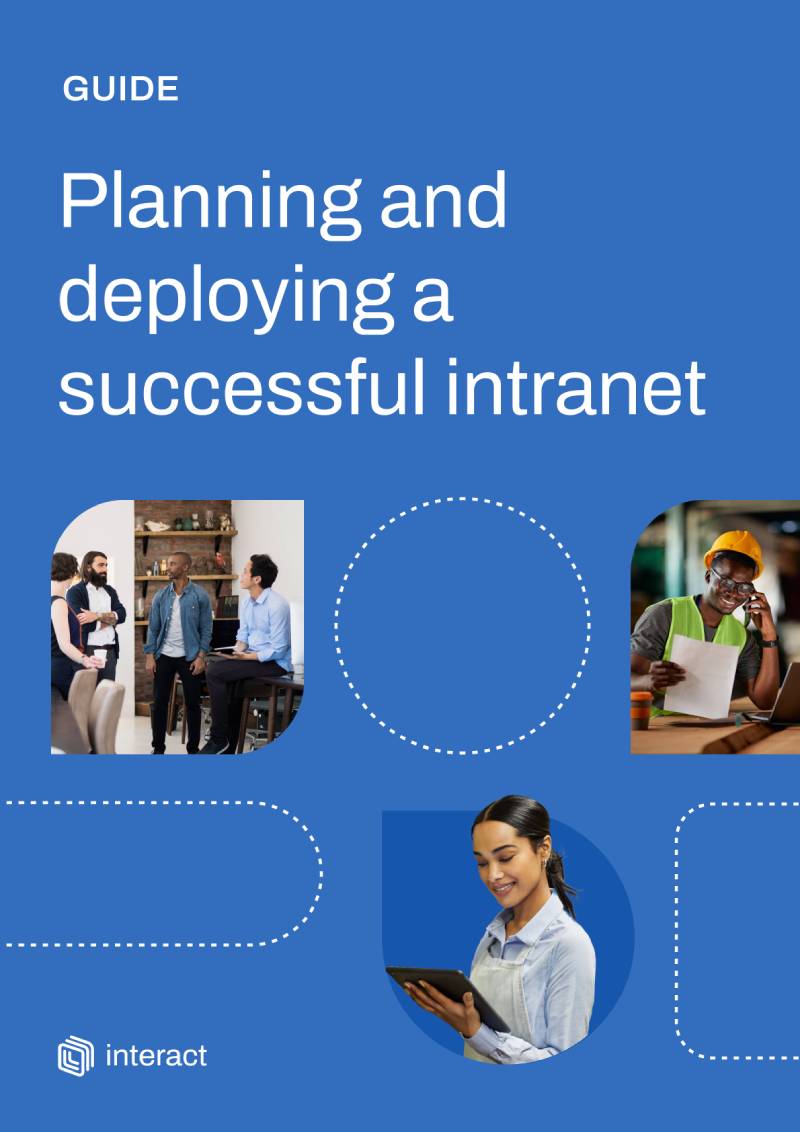For organizations to attract, retain, and delight employees in a tech-first climate, they need to prioritize employee experience and improve business communication. With better internal communication, staff feel more connected to their colleagues and to the organization’s mission – giving them a greater reason to stay.
Although this has traditionally been the preserve of person-focused teams such as HR and Internal Communications, complex digital workplaces also require buy-in from IT professionals too. Getting IT’s expertise when finding a communications platform that fits your existing tech stack is crucial.
Every department has different priorities though, and, while getting new intranet software to improve accessible communication may be important for you, IT may disagree.
This article sets out how you and your IT team can work together to get a business communication platform that works for everyone.
The role of IT has expanded
The importance of IT in helping to improve employee experience and engagement has long been predicted, with Gartner suggesting in 2019 that by 2021 CIOs would “be as responsible for culture change as Chief HR Officers.”
The essential guide to planning an intranet
As with much else in the world of work, the pandemic has accelerated this change too and in 2021 a Forrester study of 1,000 IT leaders found that:
- 57% were collaborating with HR to improve employee experience.
- 36% said they had experienced a significant increase in responsibility for setting up adaptive business-resiliency practices.
- 28% saw increased responsibility for EX and engagement.
- 29% were tasked with improving employee wellbeing.
IT is not a silo anymore; it’s a function embedded within nearly every business process and team. The new CIO fully understands the value of partnerships with peers in lines of business, marketing, HR, sales, and more.
Source: Forrester, The CIO in 2020: A Window of Opportunity
Even with the changing business landscape, however, the importance of CIOs and IT teams for the delivery of better internal communication has always been predictable.

Source: Jacob Morgan, The Three Environments That Create Every Employee Experience
In his book “The Employee Experience Advantage,” Jacob Morgan outlines the importance of the technological environment as a key factor in EX delivery. This environment includes everything from enterprise social networks to the mobile devices issued to employees.
While fully functional IT experiences can enable productivity: outdated and poorly administered experiences make it harder to communicate and collaborate, increase time taken on tasks, create duplication, and create a disengaged workforce.
What makes for an engaging IT experience? Morgan suggests three things in his “ACE technology” pillar of EX. Organizations should provide tools and experiences that are:
- A: Available to everyone
- C: Consumer grade technology
- E: Employee needs versus business requirements

Source: The Technological Environment in Employee Experience
If IT departments and CIOs are to partner with other teams to deliver outstanding EX and improve business communication then, they need to be confident that any new software meets the ACE criteria.
When deployed properly, modern intranet software delivers all these requirements:
A: Accessible to all users via desktop, responsive, and mobile app.
C: Consumer-grade social, search, UX, and integration capabilities.
E: Employee-centric software that uses AI to personalize content recommendations.
How can IT and Comms improve business communication together?
The essential guide to planning an intranet
Like any large-scale software project, putting a new intranet in place requires alignment from all stakeholders. However, the priorities and requirements of all the teams involved (HR, internal comms, IT, etc.) are often very different.
Comms and HR leaders often want comms-centric features:
- Customization options and personalized content for users
- An intuitive CMS
- Mobile app availability
IT decision-makers on the other hand are more likely to ask for other tools:
- Integrations with leading software applications
- Advanced enterprise search
- An easy-to-use interface that enables self-service and reduces ad hoc queries. This point is especially pertinent because it is one of the differentiators that elevates an intranet over a DMS
Despite these apparent differences though, teams within a business can meet in the middle. Below are five areas where multiple departments benefit from intranet technology.
- Centralized access: Whether you’re posting how-to videos for IT or maternity policy for HR, the intranet is the one place employees should have universal access to up-to-date content and communications. Your platform should remove the doubt and frustration caused by scattered shared drives and multiple versions of documents.
A centralized CMS intranet connected to your cloud-based document management systems can be rapidly scanned by a powerful enterprise search, with the most important documents being surfaced first. This can cut down on the number of easily self-resolved queries being sent to IT.
- Enabling collaboration: Many employees within an organization have experience and expertise that sits outside of their job title or department, but without a way to profile those skills, knowledge can be silo-ed and project progress delayed.
An intranet with fully completed user profiles is a ready bank of people who can help to move a project along. By encouraging staff to describe their own skills and interests, an organization encourages cross-team collaboration and makes it more likely that individuals will be able to find details of someone who can help solve a unique problem. By setting up groups with common interests, you also stand a better chance of connecting individuals who may not have met (you may have some secret PowerShell enthusiasts desperate to share their knowledge). This can improve social and work-related outcomes.
- Multichannel communication: Whether it’s a cybersecurity crisis or a platform upgrade, IT departments often need to communicate with their company-wide colleagues. However, it can be difficult to connect with every employee, particularly those working on the frontline or on the road.
Broadcasting multichannel communications through your intranet is an effective way to connect employees with important messages. From email to mobile app notifications and SMS messages, IT has a greater range of communications channels than ever with an integrated intranet.
- Personalize business communication: Let’s face it, when you’re communicating with thousands of users, in multiple languages and work settings, the company-wide email is unlikely to cut through. If you want to get the right information to groups with different needs, personalization is key.
Intranet software tailors your business communication through the use of individual homepages for different areas of the business, team areas that provide focus for a particular department, or ‘persona groups’, which enables messages to reach specific audience groups. This means that staff see information that is most relevant for them and their work. If groups of people within your organization have more or less advanced IT needs, for example, personalized homepages can raise the profile of FAQs and ensure that standard queries are answered without increasing the burden on IT.
- Create a digital hub with SSO: The average enterprise juggles around 500 different applications as part of its technology stack, so password and security risks are important to IT decision-makers. Your intranet can be configured as an identity provider, supporting ADFS, SAML and LDAP, which enables staff to login once to their intranet and securely access business integrations without multiple logins. This reduces the possible number of attack surfaces for IT and the number of passwords everyone else has to remember. Win-win!
Related articles:
- Intranet platforms and Microsoft: How to maximize your digital workplace
- How to convince leaders that 2022 is the year for employee experience software
- How to create an intranet business case


